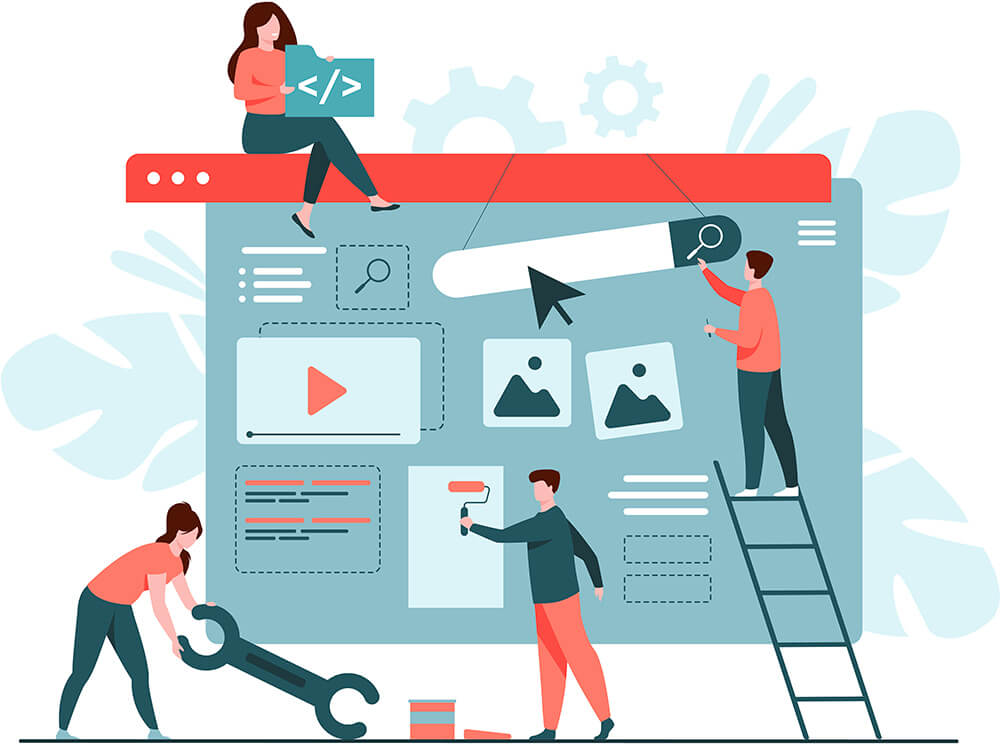Specialized applications are being integrated into the computer systems of an increasing number of businesses, allowing them to add value to their everyday operations while also operating their businesses in a more efficient and cost-effective manner. SaM Solutions, which has more than two decades of expertise in software engineering, enables a broad range of companies, from small and medium-sized enterprises to start-ups, to become digital.
The digitally disrupted and technologically driven world necessitates the development of faster solutions that do not sacrifice quality. When it comes to reducing turnaround time and increasing return on investment (ROI), organisations demand software engineering services that provide the necessary agility, established processes, and completeness.
As a result, service-oriented software engineering services should be implemented in order to benefit from the best of both worlds, namely the benefits of software engineering and cloud computing. As a result, you will be able to increase the quality of the software applications as well as the time it takes to launch them while integrating the database from older systems.
A number of large-scale businesses and applications have been attracted to the incredible combination of cloud computing and services due to several advantages, including ease of development, a smooth outline for mission-critical applications, and a cost-effective journey from simple to complex applications. Another issue that majors corporations are concerned about is security, which is also addressed via the use of secure cloud computing options.
While service-oriented software engineering and cloud technology solutions are comparable in terms of topics such as resource outsourcing and information technology management, they are distinct in other respects, as discussed below. Cloud computing, on the other hand, concentrates on the necessary delivery of the services, while service-based software engineering services concentrate entirely on architectural design utilising service composition and discovery. As a result, the SOA for the two services is different.
Service-oriented architecture (SOA) and agile software development techniques are characterised by their ability to adapt to changing conditions and embrace change. Despite the fact that the idea of agility is clearly evident on both sides, the integration of the two disparate concepts (architectural framework and development process) should be carefully considered prior to implementing them in a software development project, according to the authors.
Service computing has an architectural dimension, which is as follows:
It is possible to use the service computing architectural paradigm for both the development and the deployment principles. When you create a service, you are defining something that is unique and independent for a certain software entity, as well as something that has well-defined standards and functions. These different services are then merged to produce a workflow that is tailored to the requirements of the application.
When software is delivered as a service, it is self-contained and independent of the operating system. Instead of software, you may use a platform as a service, in which case each service that comes into touch with the platform to create the workflow is reliant on the platform for operation.
Organizations distribute their applications utilising a well-defined SOA, which is based on the development and deployment service computing platforms that the organisation has selected for itself. Service Level Agreements establish what services are provided and how they are used, and the service provider, in this situation, is responsible for adhering to these conditions.
Increased agility, well defined procedures, and a shorter time to market are all advantages of service-based software development services, according to experts. As cloud computing solutions become more prevalent, it is critical to develop service computing standards in order to maximise data protection while also harnessing the potential of your data. You may build the services, search for them, find them, and even test and run them individually or as part of a workflow at any moment, hence decreasing the overall time required for development, debugging, and deployment.
Software engineering used for Particular Applications
Software engineering services provide a variety of bespoke software business services to assist you in automating your business operations while taking into account the unique characteristics of your organisation and computer system. These services include the following:
- Consultancy services for development
- Designing an architectural structure
- Development
- Measurement
- Deploying
In software development, SOA is an architectural approach for creating software applications that make use of services offered across a network, such as the internet. It encourages loose connection between software components, allowing them to be reused as much as possible. Service-oriented architecture (SOA) allows applications to be developed on top of services. As an implementation of a well-defined business capability, a service is available for consumption by clients in a variety of applications and business processes.
SOA enables the repurposing of existing assets, allowing for the creation of new services from an existing IT architecture and system infrastructure. This means that enterprises may make better use of their current investments by repurposing existing programmes, and it ensures interoperability across diverse applications and technological environments. SOA enables a degree of freedom that was previously unattainable, in the sense that it allows for:
Services are software components that have well-defined interfaces and are not reliant on the implementation of the software component. The separation of the service interface (the what) from its implementation (the how) is a fundamental feature of service-oriented architecture (the how). Such services are consumed by consumers who aren’t concerned with the details of how the services will carry out the requests they make.
- Services are self-contained (they only execute defined functions) and loosely connected with other services and systems (for independence)
- Services may be identified in a dynamic manner.
- Composite services may be constructed by combining elements of different services.
